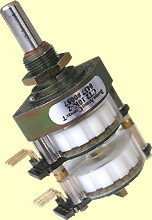I think that striving for an industry standard for use of a word like transparent is a very positive thing. It may well be that all ‘transparent’ amps do in fact sound nigh on identical; if this is the case then the purchaser can look at its features rather than benefits. Does it have enough inputs, remotes, whatever?
The more I read this thread the more I think that I personally am not drawn to the piece of wire with gain sound. Of course many will say, but there is no ‘sound’ this is what is on the recording, and this may well be the case.
I am now 55 years old and have been surrounded by music and musicians for nearly all my life. I know how music can move me and I know what I like to hear. I am more than happy to understand that my preference in musical reproduction involves some sort of built in distortion. I would personally view this distortion as musicality and emotion.
Again I know that the science lead enthusiast here will say that hi-fi can’t add musicality and emotion and again I agree with this. What I personally feel is that some ‘transparent’ hi-fi actually strips and bleaches out the latent musicality and emotion that is within the recording.
A friend of mine who works in the hi-fi industry has often said that it is pretty easy to make things read better but that will often lead to the product sounding worse. He believes, as I do, that there is a skill set beyond the science to unlock the musicality and emotion that is latent within recordings.
The only way that I can describe these latent emotions is that there are a couple of recordings that if the system is set up correctly and using the right equipment will actually make me cry and make the hairs stand up on my neck. On other equipment there is not the same access to the emotion that is latent. It's like I'm hearing it all but I'm not feeling it all.
I’m quite prepared to believe that all the equipment that I have heard these recordings on would be transparent by today’s standards, yet they deliver the soul of the music in different ways.
I can prove none of the above but I know what I know. This is obviously a personal viewpoint but I know that I am not alone.




